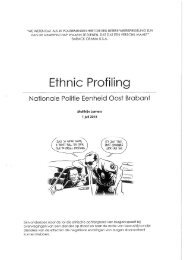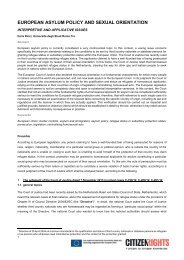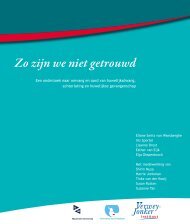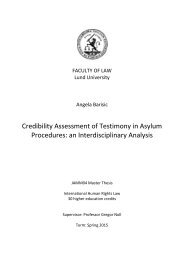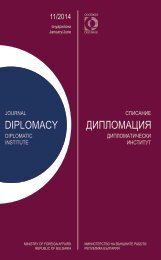AEMI
AEMI-2016-web
AEMI-2016-web
You also want an ePaper? Increase the reach of your titles
YUMPU automatically turns print PDFs into web optimized ePapers that Google loves.
104 <strong>AEMI</strong> JOURNAL 2015<br />
Fig 7 Peter Paysen Petersen (1825-1889), a sailor<br />
from Tondern, left his ship in 1853 and went into the<br />
California goldfields.<br />
Source: North-Frisian Emigrant Archive, Nordfriisk<br />
Instituut<br />
fee party. But money for a new plough<br />
or something like that, she always liked<br />
to lend. The Second World War brought<br />
trouble to her because the heritage was<br />
held back. But in the 1950s she was able<br />
again to lend the village the money to<br />
finance a transformer station, and so it<br />
is told that Aunt Guste brought electric<br />
light to Wester-Ohrstedt.<br />
Simon Detlef Bahnsen returned<br />
to Schleswig-Holstein in 1840, some<br />
ten years before the first of the three<br />
great emigration waves started overseas.<br />
Before the 1890s millions of<br />
German emigrants, hundred thousands<br />
from Schleswig-Holstein and ten<br />
thousands from what today is the district<br />
North-Frisia left for a destination<br />
mostly in North-America. (Pauseback,<br />
Übersee-Auswanderer, 47-66) There are<br />
statistics available for Schleswig-Holstein<br />
only from the year 1871 onwards<br />
(Statistisches Landesamt, 39-40). But<br />
only during the ten years between 1880<br />
and 1893 which mark the last and heaviest<br />
tide of emigration at least 90,000<br />
men women and children migrated<br />
overseas, i.e. nearly 10 per cent of the<br />
population of Schleswig-Holstein at that<br />
time. The west coast with North-Frisia<br />
was among the hotspots. So around<br />
1900 there existed a tightly-knit network<br />
that connected people from practically<br />
every part of our country and<br />
especially our region with some relatives<br />
or friends mostly in the United States<br />
but also in Argentina, Brasilia, Australia<br />
and South-Africa. This brought back a<br />
steady and thick stream of letters, parcels,<br />
money, newspapers and visitors.<br />
After a hundred years and two world<br />
wars only remnants still exists today, e.g.<br />
on the islands Föhr and Amrum, where<br />
emigration reamained a tradition until<br />
the 1950s.<br />
Nearly all emigrants wrote home and<br />
received letters in return, and surely<br />
most of them would have loved to visit<br />
home, if only it had been possible, as<br />
Peter Paysen Petersen, a Frisian from<br />
Tondern wrote home in 1859:<br />
I would gladly give up everything I possess<br />
here – except jacket and trousers –<br />
if in return I could spend my time for<br />
at least a month between Hamburg and<br />
Tondern. 8<br />
He held the position of second mate<br />
when in 1853 he left his ship and went<br />
to the goldfields in northern California.<br />
The captain’s offer to make him<br />
first mate could not change his mind.<br />
But what he found only secured his liv-




